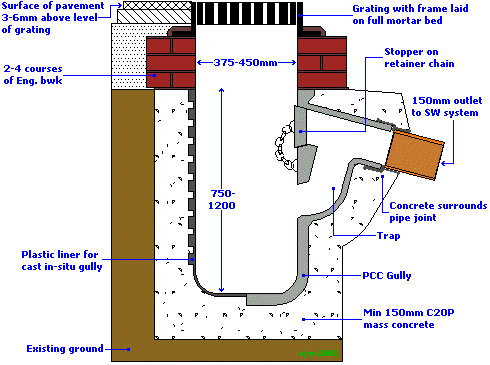- Joined
- 17 Sep 2020
- Messages
- 2
- Reaction score
- 0
- Country

Hi, I live on a private road and the rainwater/road gullys were blocked with leaves, so I've set about clearing them out.
Can anyone enlighten me as to what the purpose of the large stopper is as per this design:

It seems that the rainwater will already exit at the lowest point - the stopper which is above this height seems to serve no purpose?
Can anyone enlighten me as to what the purpose of the large stopper is as per this design:

It seems that the rainwater will already exit at the lowest point - the stopper which is above this height seems to serve no purpose?
